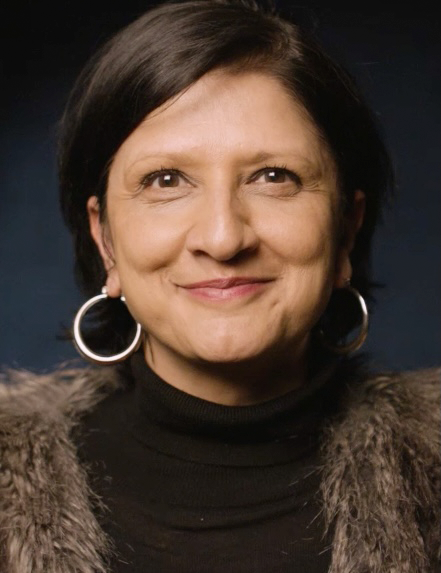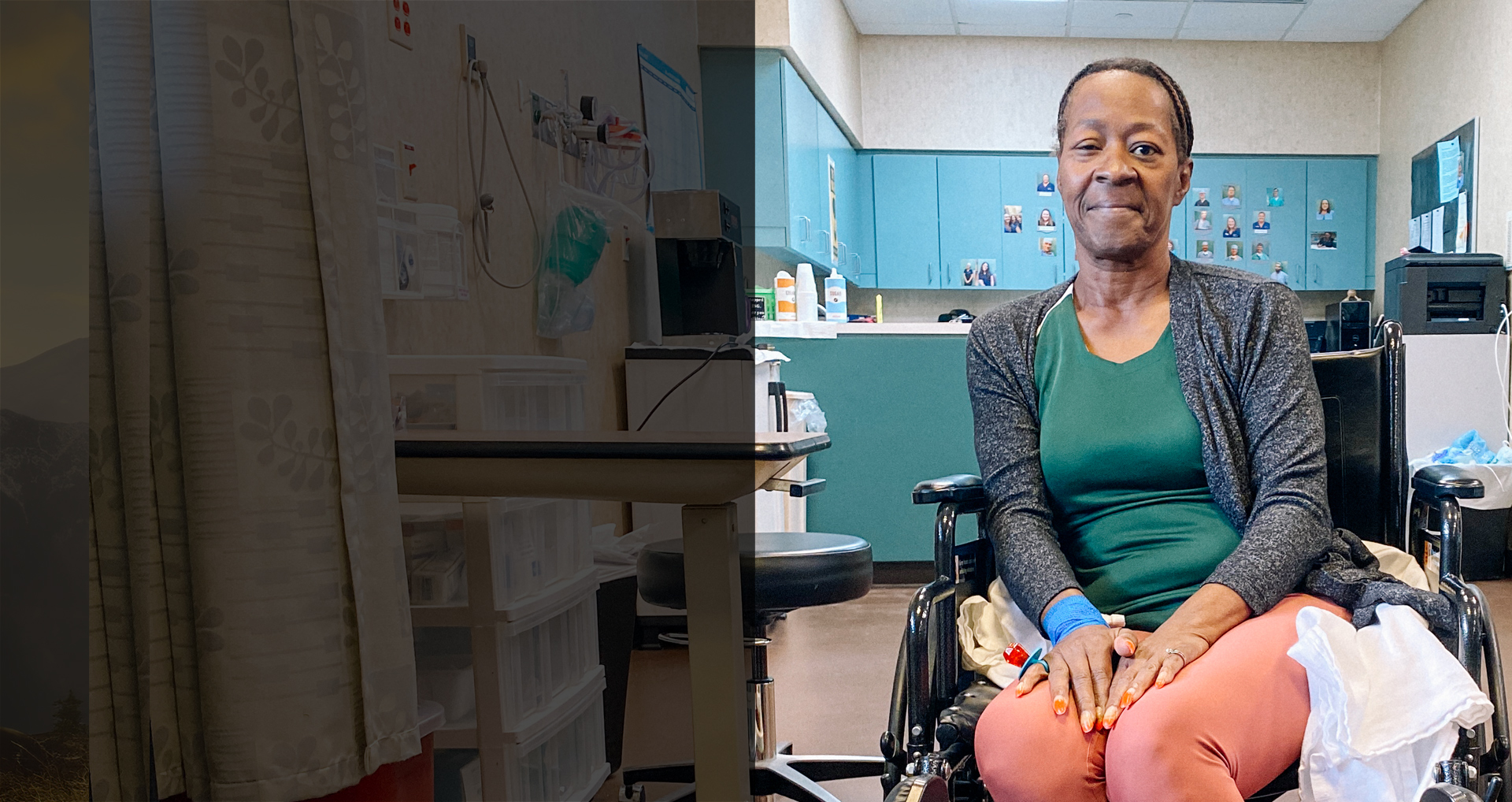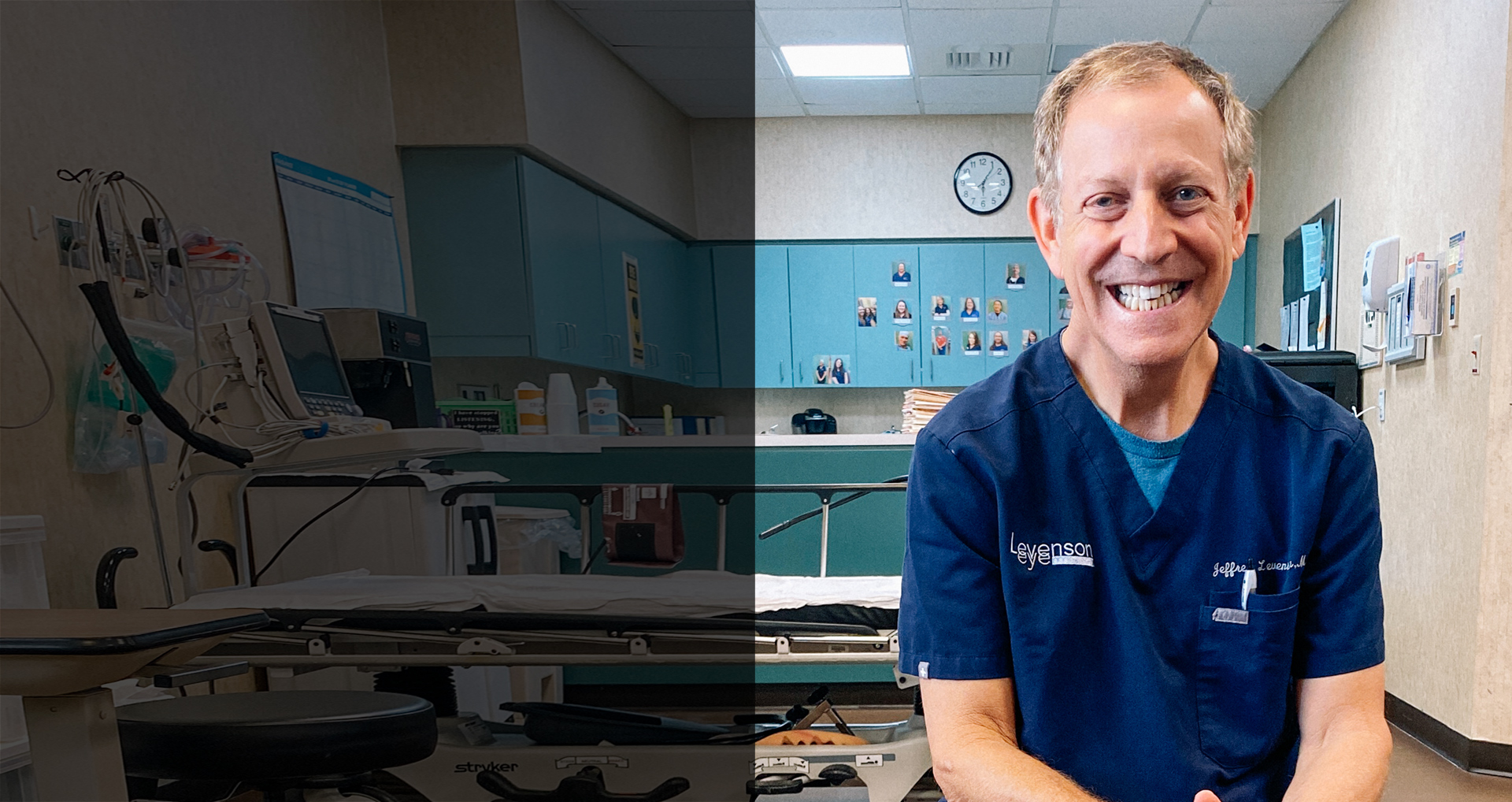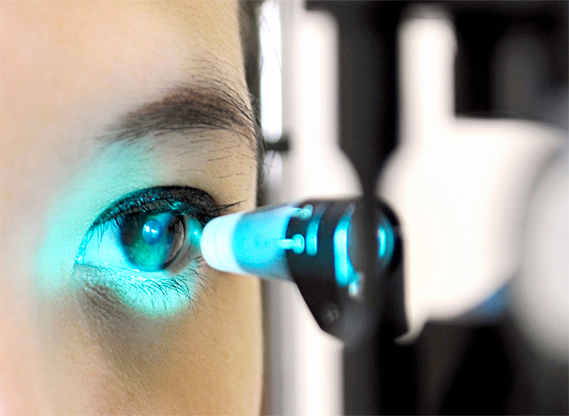
Vision Made PossibleTM
Vision Made Possible™ aims to provide greater awareness of eye health from childhood myopia to presbyopia and cataracts.
We've enlisted the legendary photographer and The New York Times best-selling author Kate T. Parker to help capture the real-life stories of patients and eye care professionals (ECPs) around the world.
These personal stories serve to shed light on the importance of eye health and a comprehensive eye care.
Press Release
September 26th 2023
Johnson & Johnson Vision Teams Up with Photographer and New York Times Best-Selling Author, Kate T. Parker to Ignite Conversations About Importance of Eye Health

Sight is Precious
Sight is a key component in the way many of us experience the world, learn and remember, and what many fear losing the most.
It is the most dominant of the five senses and plays a crucial role in every facet of our lives.1


Myopia
Myopia is sometimes called 'nearsightedness' but it is much more. It is a chronic and progressive disease that causes the eye to grow too long.1-3
Although there are ways to manage the disease, myopia stays with you for life, typically getting worse over time. It can lead to significant risks to eye health later in life, including loss of sight.1

Myopia Facts
Myopia is the biggest eye health threat of the 21st century, and is a public health crisis.4 In fact, the number of people with myopia has nearly doubled over the past 20 years.5
Risk factors for developing myopia may be spending less time outdoors, increase in near work (reading, screen time), and having parents who have myopia.6-8
Every child should be monitored for myopia from an early age, with annual comprehensive eye exams starting by the age of 5.9-10
It's important to consult with an eye care professional for accurate diagnosis, personalized advice, and treatment options related to myopia.
- Flitcroft DI. The complex interactions of retinal, optical and environmental factors in myopia aetiology. Prog Retin Eye Res. 2012;31(6):622-660.
- Donovan L, Sankaridurg P, Ho A et al. Myopia progression rates in urban children wearing single-vision spectacles. OVS 2012;89(1):27-32.
- Pärssinen O, Kauppinen M. Risk factors for high myopia: a 22-year follow-up study from childhood to adulthood. Acta Ophthalmologica. 2019;97(5):510-518.
- Morgan IG, French AN, Ashby RS, Guo X, Ding X, He M, Rose KA. The epidemics of myopia: Aetiology and prevention. Prog Retin Eye Res. 2018 Jan;62:134-149.
- Holden BA, Fricke TR, Wilson DA, et al. Global Prevalence of Myopia and High Myopia and Temporal Trends from 2000 through 2050. Ophthalmology 2016;123:1036-42.
- Wu PC, Chen CT, Chang LC, Niu YZ, Chen ML, Liao LL, Rose K, Morgan IG. Increased Time Outdoors Is Followed by Reversal of the Long-Term Trend to Reduced Visual Acuity in Taiwan Primary School Students. Ophthalmology. 2020 Nov;127(11):1462-1469. doi: 10.1016/j.ophtha.2020.01.054.
- Huang HM, Chang DS, Wu PC. The Association between Near Work Activities and Myopia in Children-A Systematic Review and Meta-Analysis. PLoS One. 2015 Oct 20;10(10):e0140419.
- Tedja MS, Haarman AEG, Mees ter-Smoor MA, Kaprio J, Mackey DA, Guggenheim JA, Hammond CJ, Verhoeven VJM, Klaver CCW; CREAM Consortium. IMI - Myopia Genetics Report. Invest Ophthalmol Vis Sci. 2019 Feb 28;60(3):M89-M105
- American Optometric Association. Annual Comprehensive Eye Exam.
Morgan IG, French AN, Ashby RS, Guo X, Ding X, He M, Rose KA. The epidemics of myopia: Aetiology and prevention. Prog Retin Eye Res. 2018 Jan;62:134-149


Beauty and Performance
There is growing interest in contact lenses that correct vision and also allow patients to enhance the appearance of their natural eye.
Beauty lenses are medical devices and eyes are sensitive - making it essential to have an eye exam and proper fitting by an eye care professional.1
1. Food and Drug Administration. Website.https://www.fda.gov/medical-devices/contact-lenses/decorative-contact-lenses-halloween-and-more. Accessed June 2023



Farsightedness
There are two kinds of farsightedness: Presbyopia and Hyperopia.
Presbyopia is a progressive eye condition, which makes it difficult to focus on close objects and usually becomes noticeable around 40 years of age.1,2

Farsightedness Facts
Globally, more than 1 billion people have presbyopia.3
Hyperopia affects people of all ages and is where near and occasionally distant objects appear blurry.4
It's important to consult with an eye care professional for accurate diagnosis, personalized advice, and appropriate treatment options related to presbyopia or hyperopia.
- InformedHealth.org [Internet]. Cologne, Germany: Institute for Quality and Efficiency in Health Care (IQWiG); 2006-. Presbyopia: Overview. [Updated 2020 Jun 4]. Available from: https://www.ncbi.nlm.nih.gov/books/NBK423833/ (REF2020CT4319)
- American Optometric Association. Presbyopia. Available from: https://www.aoa.org/healthy-eyes/eye-and-vision-conditions/presbyopia?sso=y. Accessed June 2023.
- Fricke TR, Tahhan N, Resnikoff S, et al. Global Prevalence of Presbyopia and Vision Impairment from Uncorrected Presbyopia: Systematic Review, Meta-analysis, and Modelling. Ophthalmology. 2018;125(10):1492
- American Academy of Ophthalmology. Website: https://eyewiki.aao.org/Hyperopia. Accessed June 2023.


Astigmatism
Astigmatism is a common vision condition that causes blurred vision.
It occurs when the cornea (the clear front cover of the eye) is irregularly shaped or sometimes because of the curvature of the lens inside the eye.1

Astigmatism facts
This refractive error occurs in about 1 in 3 people and may occur in combination with near- or farsightedness.2
Astigmatism reduces distance and near visual acuity, vision quality, and depth perception.3,4
It's important to consult with an eye care professional for accurate diagnosis, personalized advice, and appropriate treatment options related to astigmatism.
- American Optometric Association. Web site: https://www.aoa.org/healthy-eyes/eye-and-vision-conditions/astigmatism?sso=y. Accessed June 2023.
- American Academy of Ophthalmology. Web site: https://www.aao.org/newsroom/eye-health-statistics#:~:text=Q%3A%20How%20common%20is%20astigmatism,being%20less%20than%20perfectly%20rounded. Accessed June 2023.
- Wolffsohn JS, et al. Effect of uncorrected astigmatism on vision. J Cataract Refract Surg 2011;37(3): 454-460. (REF2018OTH5219)
- Read SA, et al. The visual and functional impacts of astigmatism and its clinical management. Ophthalmic Physiol Opt 2014;34(3):267-294. (REF2020OTH4615)


Glaucoma
Glaucoma usually happens when fluid builds up in the front part of the eye, causing increased pressure within the eye which can damage the optic nerve.1

Glaucoma facts
Glaucoma, known as the "Silent Thief of Sight," is the second-leading cause of blindness in the U.S. (behind macular degeneration).2
Glaucoma is the second-leading cause of blindness worldwide (behind cataracts).3
If you suspect you may have glaucoma or have concerns about your eye health, it's important to consult with an eye care professional for accurate diagnosis, personalized advice, and appropriate treatment options.
- https://www.mayoclinic.org/diseases-conditions/glaucoma/symptoms-causes/syc-20372839 (REF2018OTH5525)
- Wood, K.J. (1995). Glaucoma: the silent thief of sight. The Lamp, 52 8, 15. (REF2019OTH4597)
- Glaucoma Research Foundation – Glaucoma Facts and Stats https://glaucoma.org/glaucoma-facts-and-stats/ (REF2019CT4302)


Dry Eyes
Meibomian Gland Dysfunction (MGD) is a leading cause of dry eye. And it's pretty common.1

Dry Eyes Fact
It's important to get screened for MGD, as the disease can be present even if you're asymptomatic.
MGD-related dryness can be problematic if you wear contacts2 or are planning an eye surgery, such as LASIK or cataract.3
More than 340 million suffer from dry eye globally.4
The information provided here is for informational purposes only, and it is not a substitute for professional medical advice. If you have concerns about your eye health or symptoms of dry eyes, please consult with an eye care professional.
- Lemp MA, Crews LA, Bron AJ, Foulks GN, Sullivan BD. Distribution of aqueous-deficient and evaporative dry eye in a clinic-based patient cohort: a retrospective study. Cornea. 2012 May;31(5):472-478.
- Machalinska A, Zakrzewska A, Adamek B, et al. Comparison of morphological and functional meibomian gland characteristics between daily contact lens wearers and nonwearers. Cornea. 2015 Sep;34(9):1098-1104.
- Starr CE, Gupta PK, Farid M, et al. An algorithm for the preoperative diagnosis and treatment of ocular surface disorders. J Cataract Refract Surg. 2019 May;45(5): 669-684.
- 2016 Dry Eye Products Market Report: Global Analysis for 2015 to 2021, December, 2016. REF2018TS4181


Cataracts
Cataracts are common and happen as we age. A cataract is a clouding of the lens in the eye, caused by a buildup of the eye's natural protein.
The buildup of protein changes the way the eye focuses light, therefore changing the color and clarity of vision.1

Cataracts Fact
Cataracts begin for most of us between ages 40 and 50 and symptoms become apparent between 60 and 70.2
Cataract treatment is a once in a lifetime opportunity to remove your cataract, correct vision problems, and see better.
If you have concerns about your eye health or symptoms related to cataracts, it is important to consult with an eye care professional for accurate diagnosis, personalized advice, and appropriate treatment options.
- American Optometric Association. Cataract. https://www.aoa.org/healthy-eyes/eye-and-vision-conditions/cataract?sso=y.
- National Eye Institute. Cataracts. https://www.nei.nih.gov/learn-about-eye-health/eye-conditions-and-diseas... Accessed June 2023.

Eye Health Journey
More than two billion people around the world suffer from visual impairment, a number expected to double by 2030.2
One billion of these instances could have been prevented or are yet to be addressed.2
We want to create a world where everyone can experience optimal sight throughout their life. At every age, in every stage of life, we are committed to making vision possible for you now and in the future.
Chad M.
Linebacker for the Jacksonville Jaguars
Photos by Kate T. Parker
Chad’s journey to healthy vision all started with a comprehensive eye exam and has made a tremendous impact on his life on and off the field.

Juan Sr. and Juan Jr.
Father and son from Puerto Rico
Photos by Kate T. Parker
Meet Juan C. Jr. and Juan C. Sr., a father and son duo from Barceloneta, Puerto Rico, whose lives intertwine in more ways than one.

Shona E.
Busy mother and businesswoman
Photos by Kate T. Parker
Meet Shona. Her life is a mix of work, loving her two children and pursuing her passions. She loves skiing, spending time outdoors, and activities that bring her joy keeping her connected with friends.

Ryan G.
Baseball player at Trinity University
Photos by Kate T. Parker
Ryan G.'s journey, from squinting at the board in fifth grade to thriving as a baseball player at Trinity University, is a story of growth and determination. When his math teacher suggested glasses, it marked the start of a new chapter in his life.

Jim M.
Cataract patient
Photos by Kate T. Parker
Jim M., based in Broadway, NJ, has a deep passion for life and an unwavering commitment to his family.
Despite facing a lifetime of vision challenges, Jim’s positive outlook, and life motto of, “you have to get busy living,” has guided him through an inspiring vision journey.

Gwendolyn B.
Cataract patient
Photos by Kate T. Parker
In an extraordinary journey of resilience, Gwendolyn faced the daunting challenge of crossing four lanes of traffic while working late nights at a convenience store in Garner, NC, as her vision deteriorated.

Dr. Jeffrey Levenson, M.D.
Ophthalmologist and cataract patient
Photos by Kate T. Parker
Dr. Jeffrey Levenson, M.D. is a prominent Ophthalmologist based in Jacksonville, FL and Chief Medical Officer of SEE International, a Santa Barbara nonprofit dedicated to eliminating preventable blindness worldwide.



Paving the Way for a New Future of Eye Health
Today, J&J Vision is building on our proud legacy of firsts, harnessing our pioneering spirit, our diverse talent, and our proven success in pushing the boundaries of science and technology.
We are reimagining the scale and impact we can make across a patient’s life.
But we can’t do it alone.
We believe in the power of collaboration, and we are working with others to advocate, educate and expand global access to care.
Do I need to see an Eye Care Professional?
Prioritizing an annual eye exam offers even broader health benefits beyond just eye care. A comprehensive eye exam can detect over 270 different medical conditions, ranging from diabetes to heart disease.3 An eye care professional can evaluate the overall health of your eyes, contributing to your total body health.


